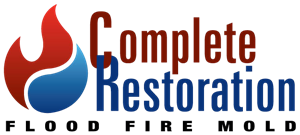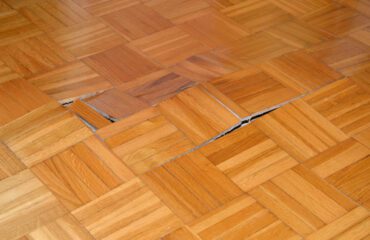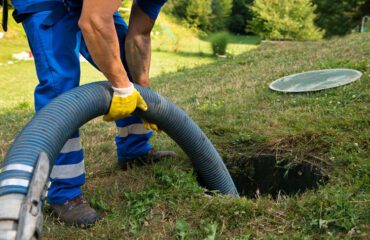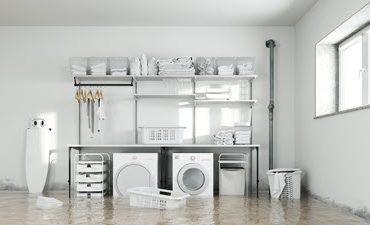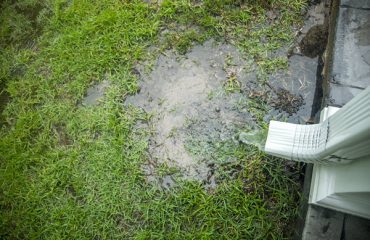A bathroom is one of the most frequently used spaces in our homes, but it’s also one of the most vulnerable to water damage. Over time, the constant exposure to moisture and humidity can lead to a common problem that many homeowners dread: a rotting bathroom floor. Not only is a rotting bathroom floor unsightly, but it can also pose serious structural and health risks if left untreated. In this blog post, we’ll guide you through the process of identifying the signs that your bathroom floor may be rotting, what those signs look like, and, ultimately, how to effectively fix a bathroom floor that is suffering from rot.
Signs Your Bathroom Floor May Be Rotting
Spongy or Soft Spots
One of the earliest signs of a rotting bathroom floor is the development of soft or spongy areas underfoot. When you walk across the floor, if you notice areas that feel noticeably softer or sink slightly when pressure is applied, it’s likely a sign of rot.
Discoloration or Stains
Water damage often leads to noticeable discoloration or staining on the bathroom floor. You might observe dark patches, water rings, or unusual color changes on the floor’s surface, especially near fixtures like the toilet, bathtub, or sink.
Warped or Buckled Tiles
If you have tile flooring in your bathroom, watch for warped or buckled tiles. Moisture can seep into the subfloor, causing it to swell and push the tiles upward, creating an uneven and unsightly surface.
Foul Odors
Rotting wood typically emits a musty, unpleasant odor. If you notice a lingering foul smell in your bathroom, even after cleaning, it may be a sign that mold or mildew is thriving beneath the surface due to a rotting floor.
Cracked Grout or Caulk
Damaged grout lines or deteriorating caulk around fixtures like the bathtub or shower can indicate that water has penetrated the floor beneath, contributing to rot.
Visible Mold or Mildew
Sometimes, you may notice visible mold or mildew growth on the bathroom floor. Mold thrives in damp environments, and a rotting floor can provide the perfect conditions for its growth.
Use Complete Restoration of Salt Lake
If one or more of these signs are present in your bathroom, the best course of action is to call us. Restoring a rotted bathroom floor can be a complex and time-consuming endeavor. While some homeowners may attempt a DIY approach, we offer professional restoration services at Complete Restoration of Salt Lake, which is a compelling alternative. Our team of experts brings a wealth of experience, advanced equipment, and a systematic approach to the restoration process, ensuring efficiency and effectiveness. We can quickly assess the damage, address the root causes, and carry out necessary repairs while adhering to high-quality standards.
Our professionals excel in tasks such as mold remediation, insurance assistance, and long-term savings through proper restoration, ultimately providing homeowners peace of mind. By entrusting Complete Restoration of Salt Lake, you can be confident that your bathroom floor will be restored efficiently and effectively, sparing you the challenges and potential pitfalls of a DIY project while delivering lasting results.
How to Fix A Rotting Bathroom Floor
Once you’ve identified the signs of a rotting bathroom floor, it’s crucial to take action promptly to prevent further damage and potential health hazards. If you decide to begin the project yourself, here’s a step-by-step guide on how to fix a bathroom floor that is rotting:
Assess the Extent of Damage: Begin by thoroughly assessing the extent of the damage. Identify the affected areas and determine whether they are limited to the surface or the subfloor has also been compromised.
Address the Water Source: Identify and address the source of water damage, whether it’s a leaky pipe, faulty sealant, or poor ventilation. Ensure that the source is fixed to prevent future damage.
Remove Damaged Materials: Carefully remove the damaged flooring materials, including tiles, linoleum, or any other covering. If the subfloor is affected, it may also need to be replaced.
Treat Mold and Mildew: If mold or mildew is present, use appropriate cleaning solutions to remove it. Ensure the area is thoroughly dry before proceeding.
Replace Subflooring: If the subfloor is damaged, remove and replace it with a new, water-resistant material like marine-grade plywood or cement backer board.
Install New Flooring: Once the subfloor is repaired or replaced, install new flooring materials, such as tiles, vinyl, or laminate, ensuring proper waterproofing measures.
Seal and Caulk: Seal gaps and seams with waterproof caulking to prevent moisture from infiltrating the floor again.
Regular Maintenance: Finally, establish a routine for regular bathroom maintenance, including checking for leaks, proper ventilation, and maintaining a dry environment to prevent future issues.
Conclusion
A rotting bathroom floor is a problem that should not be ignored, as it can lead to costly repairs and potential health risks. By recognizing the signs of rot early and following the steps outlined for repair and prevention, you can ensure your bathroom floor remains solid, functional, and aesthetically pleasing for years.
